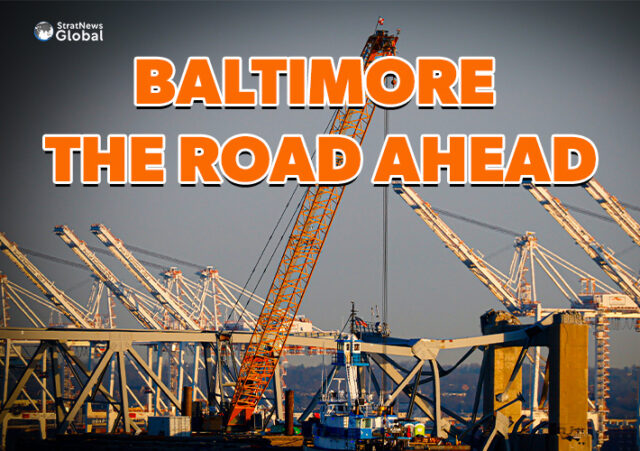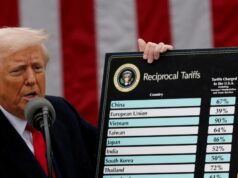This is what remains of the Francis Scott Key Bridge after a ship rammed into it about a week ago.
The focus has shifted to hauling the shattered remains out of Patapsco River. That’s the first step towards reopening the Port of Baltimore and recovering the bodies of four missing workers who are presumed dead.
Experts and machines are on the job, trying to break up the bridge into right-sized pieces that can be lifted. Seven floating cranes, 10 tugboats, nine barges, eight salvage vessels and five Coast Guard boats have been engaged.
It’s a daunting task, says Maryland Governor Wes Moore. “Some shipping containers have been ripped apart. The broken pieces of the bridge weigh about 4000 tonnes. Each part of the debris removed from water will be inspected at the Atlantic logistics centre. Wreckage has blocked route to the port,” he said.
The disaster has economic ramifications, not just for Maryland but for the entire nation. Baltimore port handles more cars and farm equipment than any other port in the US.
Eight people fell into the water when the bridge collapsed. Two were rescued, divers have fished out two bodies but murky water conditions which means zero visibility is making the job tough. Another challenge is the mangled debris underwater.
President Biden has approved $60 million in immediate aid, and said the federal government will pay the full cost of rebuilding the bridge that carried 30,000 vehicles daily.
But the immediate priority is to clear the shipping channel so that the port can be reopened.
(With inputs from AP)
At six feet and over, cool, calm and always collected. Never a hair out of place. He is the high priest of editorial facts, grammar is his baby and headlines are meat on the bone. Loves samosas and cricket, tracks Twitter and when in his cups, nothing better than Jagjit Singh’s ghazals.





